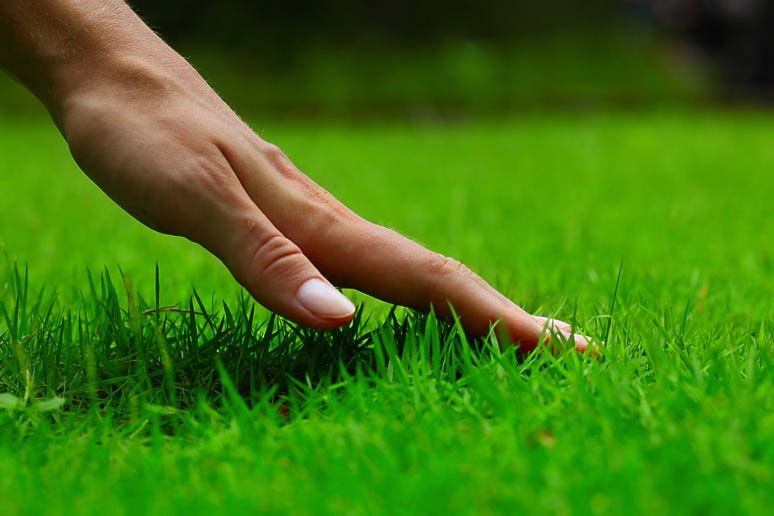After a long period of heat, drought and water restrictions, many folks are not very proud of how their lawns look – okay, there’s brown and then there’s very brown! Hopefully, fall rains will come soon to help bring back the green. Ironically many weed varieties, particularly clover, plantain and crabgrass, seem to thrive in drought conditions, and they are giving our lawns quite a weedy appearance. Moss is still doing well in shady areas, in spite of the recent heat. So, there’s some work to do.
Lawns are ground covers that not only add to the appearance and value of our homes, but they are also environmentally important, sequestering carbon, providing oxygen and helping control pollution. When they look bad, our entire landscape looks bad. Once the cooler weather arrives, let’s take advantage of it and get our lawns into shape.
First, the weeds! They compete with our existing grasses for water and food, they look unsightly and they spread like wildfire. Most of them are annuals, so consistent weekly mowing with the blades set as low as possible is the first line of defence. If you make a point of mowing in opposite directions each week, this will also help prevent thatch. Maintaining good cultural practices for your lawn grasses is the next best way to keep out weeds. That means building a good soil base through aeration and proper watering and feeding. Most weeds, with the exception of velvet grass, couch grass, clover and horsetails, can be controlled by simply digging them out as they appear, or spot treating them with environmentally-friendly ‘EcoSense Weed B Gon’.
Over-seeding is another great way to help choke out weeds, and now is the best time of the year to do just that. If you take a little time to keep tabs on your weeds, you will be amazed just how easy it is to control them. Cooler night temperatures and morning dew really help the seeds germinate and take hold. Use a mix of seeds that has perennial rye grasses, preferably the new award-winning ‘stoloniferous’ blend called ‘Natural Knit’ at the rate of 5 lbs. per 1000 square feet. ‘Natural Knit’ is now more widely available in many garden stores. Amazingly, it is actually aggressive against weeds. Even though these grasses are fast germinators (about 7-10 days at this time of year), they still need daily watering until the seed has become rooted. You will be delighted by the difference these grasses will make to the appearance of your lawn.
Many folks are also adding 10-20% micro-clover or white Dutch clover to lawn seed mixes to enhance the thickness of their lawns and to make them more self-sustaining and more beneficial to pollinators.
For long-term success with your lawn, you really must aerate which means removing plugs of soil, either by hand or machine, to improve drainage. Those of you who have sandy soil are not off the hook here either. Winter and spring rains beat down on the soil surface, making it hard and subsequently difficult for roots to breathe and penetrate deeper into the soil. Aeration should be followed by applying a ¼ inch layer of coarse or washed sand on the lawn area. The sand will work its way into those aeration holes to keep them open, thus improving the drainage.
Finally, the fertilizer. Should you fertilize at this time of the year with fall so near? The answer is absolutely yes. Lawn grasses need nitrogen to stay green and grow well. Avoid so-called ‘winterizing’ fertilizers because they contain the wrong fertilizer formulation for the West Coast. Slow-release nitrogen fertilizers are the best because they maintain the green without creating a lot of excess growth which you, of course, get to mow. The Environmental Protection Agency in the US also endorses slow-release nitrogen because the nitrates stay in the turf. When the weather gets cooler, the rate of growth slows down. The nitrogen is stored in the grass cells which will keep your lawn green over winter and allow it to bounce back more quickly next spring. Something like a slow-release 30-0-10 formulation is great.
There are a few really fine lawns out there, but most do need some work to get them into shape for the fall and winter months. Once you have done these steps, apply some Dolopril lime (at a rate of 10kg per 200 square metres) to keep the pH level up over the winter and further discourage moss. A little effort now will pay big dividends for many years to come.
